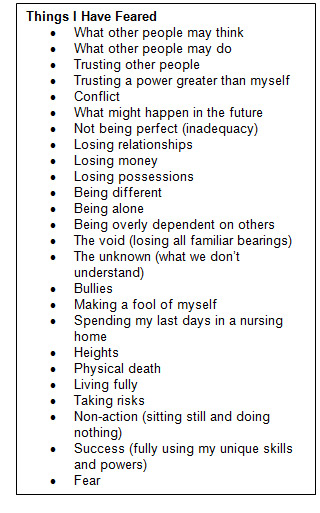TOOLS FOR TRANSFORMATION – GRATITUDE
2013
Two Perspectives on Gratitude as a Tool for Transformation
Dr. Amit Nagpal, New Delhi, India, and
Dr. Janet Smith Warfield, Florida, USA
_______________________________________________________________________________________
Dr. Amit Nagpal’s Perspective
 Was I always grateful? No, definitely not.
Was I always grateful? No, definitely not.
Yet I would say the most important lesson I have learned in my life is gratitude. The more grateful I became, the more blessings the Universe bestowed upon me. It has been a long journey though.
I had more complaints and less gratitude for almost 25 years of my life. I felt I always got less than what I gave. So naturally, I deserved to receive gratitude, not express it. The Chicken Soup for the Soul series initially inspired me to give thank you notes and express gratitude wholeheartedly (around 1998). While the complaining attitude was clouding my mind, gratitude helped me find clarity and fill positive energy in the mind.
The more grateful I became, the more my life began overflowing with beautiful souls. And on thanksgiving this year, I was able to gather strength to even express gratitude to the relationships which have been lessons rather than blessings. The people who had rather rubbed me like sandpaper, also deserved my gratitude, since they had made me grow and evolve. I also realized it’s good to give people a benefit of doubt. In fact practically speaking, giving benefit of doubt to people, gives you also peace of mind.
If you still have doubts, then I would speak the language of science. Gratitude releases the negative energy from the mind. When there is no negative energy (grudges, guilt, suppressed anger and so on), it is easier to meditate and find that peace or desired results. In your own interest forgive and bury the past. Wallace D Wattles rightly says, “The grateful mind is constantly fixed upon the best; therefore, it tends to become the best.”

In fact these lessons helped me find peace, and meditation helped me find perfect peace. Perfect peace led to regaining my lost creativity and finding clarity, purpose and joy. Beautiful souls walked in, unexpected events started happening, surprises started becoming a norm, and life became wonderfully worth living.
Let me end with a note of gratitude,
“Some inspiration comes from my inspiration (muse),
Some inspiration comes from the divine.
Some inspiration comes from my friends,
There is nothing I can claim to be mine.”
______________________________________________________________________________________________________
Dr Amit Nagpal is Chief Inspirational Storyteller at AL Services. He is a Social Media Influencer, Author, Speaker/Trainer & Coach. To know more, visit www.dramitnagpal.com. (His special interest and expertise lies in inspirational storytelling, anecdotes and visual storytelling)
AL Services offers content development/story writing, consulting, training and other services in the area of brand storytelling. To know more, write to amit@dramitnagpal.com.
_____________________________________________________________________________________________________
Dr. Janet Smith Warfield’s Perspective
Tears dampen my cheek
washing the pain from my Soul.
Refreshing shower.
After 21 years of marriage and three children, my husband abandoned me for another woman.
I had been a wonderful wife. I had washed the family clothes, cleaned the family home, baked homemade bread, cared for our yard and organic garden, joined my husband on his sailing excursions and trips to Maine, watched football games with him, entertained his friends, played bridge with him, sung our children to sleep, read them stories, played games with them. He said we had the perfect marriage.
Yet he abandoned me and our children to rut after another woman.
My whole world turned upside down. What had I done wrong?
I lost my trust in people. I lost my trust in the social systems that had supported my family over centuries. I was hurting, my children were hurting, and there was little I could do to make anything better.
I sobbed alone at night for hours. My heart shattered wide open and split into millions of pieces.
One of our sons went from straight A’s to Straight F’s in a single year, got hooked on drugs, and became involved in physical violence and arrests. I was waking up in the middle of the night with such deep rage that it felt as if my guts were being ripped from my belly. But for emotional and financial support from my parents, I might well have bought a gun and murdered both my husband and his mistress.
How can one be grateful for such a life-shattering experience?
I learned I was a survivor and spiritual warrior. Being used by this man as a convenient housekeeper, babysitter, and sex object was not the life I was intended to live.
At age 20, becoming a lawyer had never been part of my vision. At age 40, I needed to go to law school to learn how to use words and the patriarchal system to protect myself against words and the patriarchal system. I graduated cum laude and practiced law for 22 years. On more than one occasion, bullies, incompetents, and dysfunctional politicians disintegrated and disappeared as I presented relevant facts and arguments to support a dynamic, all-inclusive, co-creative community.
I learned how to think for myself and take care of myself. I became a free woman. I am beholden to no one other than the Source I have chosen to believe in, myself, and those humans who are accountable and conscious enough to deserve my gifts and my love.
I’ve experienced many dark nights of the Soul, but I’ve learned to dance with words and dance with wisdom. I’ve even learned to dance with functional, respectful, appreciative men.
Here’s a short video on gratitude you may find useful:
_____________________________________________________________________________________________________
Dr. Janet Smith Warfield serves wisdom-seekers who want understanding and clarity so they can live peaceful, powerful, prosperous lives. Through her unique combination of holistic, creative, right-brain transformational experiences and 22 years of rigorous, left-brain law practice, she has learned how to sculpt words in atypical ways to shift her listeners into experiences beyond words, transforming turmoil into inner peace. To learn more, go to www.wordsculptures.com, www.janetsmithwarfield.com, and www.wordsculpturespublishing.com.
______________________________________________________________________________________________________






![JanetSmithWarfield300[1]](http://janetsmithwarfield.com/wp2/wp-content/uploads/2011/12/JanetSmithWarfield30011-150x150.jpg)
 I had no problem with the first three requests. I never chewed gum, I didn’t often speak in front of strangers, and being punctual mattered.
I had no problem with the first three requests. I never chewed gum, I didn’t often speak in front of strangers, and being punctual mattered.



Comment